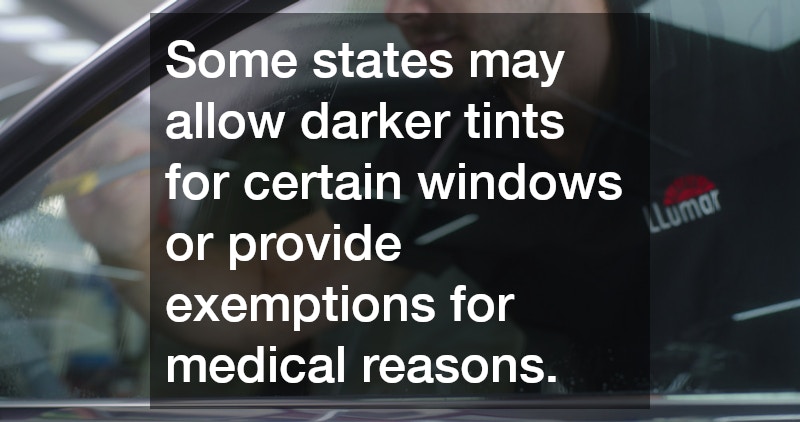
Choosing the right auto tint is crucial for enhancing your driving experience, as it significantly affects both comfort and safety. Beyond aesthetics, tinted windows offer benefits such as reducing glare, blocking UV rays, and maintaining cooler interior temperatures.
When considering auto tint, you must factor in your vehicle’s characteristics and the climate in which you drive. The right tint can prevent interior fading and protect passengers from harmful UV exposure.
It’s also important to be mindful of local regulations. Tint laws vary widely between jurisdictions, and non-compliance can lead to fines or the need for removal and reinstallation.
What Are the Different Types of Auto Tint Films?
Dyed Film
Dyed film is one of the most affordable options for auto tinting and consists of a layer of dye sandwiched between an adhesive layer and a protective high-quality coating. It primarily absorbs sunlight, reducing glare and providing some privacy.
While dyed films provide a non-reflective, custom look, they are less effective at blocking heat compared to other types. Additionally, dyed tints can fade over time, which may reduce their functionality and aesthetic appeal.
This tint is a good choice for budget-conscious consumers, but it may not offer the long-term durability required by some car owners. Its main advantages remain its cost-effectiveness and ease of installation.
Ceramic Tint
Ceramic tint is considered a high-end option due to its ability to block a significant amount of heat and UV rays without darkening the windows’ appearance. It contains ceramic particles that are both non-metallic and non-conductive.
This type of tint offers clearer visibility than dyed films while providing top-notch heat rejection and UV protection. Unlike metallic tints, ceramic options don’t interfere with electronic devices such as GPS or radios.
How Does Tint Percentage Affect Visibility and UV Protection?
Understanding Tint Percentages
Tint percentages are defined by the amount of visible light that can pass through the tint film. A lower percentage means a darker tint, offering greater privacy but potentially compromising visibility under certain conditions.
For example, a 20% tint allows only 20% of visible light to pass through, making it significantly darker than a 50% tint. Drivers must balance their need for privacy with safety, particularly during nighttime driving.
UV Protection Levels
Different tint percentages offer varying levels of UV protection, with darker tints generally providing more significant shielding from harmful rays. A high-quality tint can block up to 99% of UV radiation, protecting the car’s interior and occupants.
Exposure to UV rays can cause interior fading and skin damage, so selecting an appropriate tint is essential for long-term protection. Lighter tints, such as ceramic tints, can still offer effective UV filtration if made from quality materials.
What Are the Legal Regulations Surrounding Auto Tints?
State and Local Laws
Auto tinting laws are not uniform across states, and each jurisdiction has its own regulations regarding tint darkness and reflectivity. Compliance with these laws is crucial to avoid legal issues and fines.
Some states may allow darker tints for certain windows or provide exemptions for medical reasons. It’s essential to research your local laws to assure that your chosen tint complies with legal requirements.
Penalties for Non-Compliance
Non-compliance with tint laws can result in penalties that range from tickets or citations to mandatory removal of the tint. These fines can add up, making it essential to adhere to regulations from the start.
Repeated violations may escalate the severity of fines and enforcement, potentially affecting your driving record. In some cases, non-compliance can also affect your vehicle’s insurance coverage or resale value.
How to Choose the Right Tint for Your Needs?
Assessing Your Priorities
Determining personal priorities involves evaluating what you value most: privacy, heat rejection, UV protection, or aesthetics. As part of your decision-making process, consider how often you drive and the typical weather conditions in your area.
For those focused on high-performance tinting, ceramic options might be preferable, whereas dyed films could satisfy cosmetic needs. Balance your wants and needs to find a tint that complements your driving lifestyle.
Professional Installation vs. DIY
Deciding between professional installation and a DIY approach hinges on your budget and confidence in your skills. Professionals offer experience, warranties, and high-quality products that maximize tint performance.
DIY kits may present a cost-saving solution, but improper installation can lead to bubbles, peeling, or reduced effectiveness. However, with patience and attention to detail, DIY tinting can be a rewarding project.
Choosing the right auto tint involves considering various factors, including types of films, tint percentages, and legal regulations. Understanding these aspects ensures that you make an informed decision aligned with personal preferences and local laws.
In conclusion, assessing your priorities will help you select a tint that meets both functional and aesthetic needs. Whether opting for professional installation or a DIY approach, investing in the right tint improves comfort and protection.
